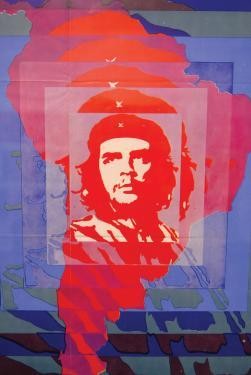One icon, one face, many images
In 19 silkscreens, the head, or heads, of Che Guevara glare proudly across the gallery space of the Bronx River Art Center. Washed out images from red to blue to orange compete for attention. His physical features are diluted, yet still the icon is as recognizable as the McDonald's arches.
The socialist revolutionary of today seems to be more of a logo than an actual man.
Ernesto Guevara de la Serna was born in 1928 in Argentina. Before his demise in 1967, Che was a Marxist revolutionary, political figure and guerrilla leader inside and outside Cuba.
But after his execution at the hands of the Bolivian government at the age of 39, the legend of Che grew in popularity thanks to Cuban photographer Alberto Korda Díaz's portrait photograph, taken on March 5, 1960.
In it, Che, donning shoulder-length brown locks and a beret bearing a gold star, stares with intensity into the distance. Over the past 40 years, the image has raised the Argentinean to cult-like status. Today it is seen on T-shirts, coffee mugs, backpacks and even forever stained on the bodies of his most loyal - albeit uninformed - fans.
In its new exhibit, "Beauty is in the Street," an impressive collection of Che Guevara images in a variety of media, the Bronx River Art Center asks, "Are political images drained of their subversive power, co-opted, and aestheticized when removed from their original context?"
In one end of the gallery, Che's masculine likeness of a war hero is turned on its head when artist Carrie Moyer produced posters of Che with a pink beret under the headline: "Amigas! Get Your Che On!" The posters are plastered one after another like advertising on the wall of a city street.
Ms. Moyer, a New York-based painter, said she does feel that Che has become more of a marketing opportunity than anything else. But his image is powerful, she contended.
"He's iconic, he basically looks like a movie star and he has come to embody the glamour of activism," she said.
Liselot van der Heijden's untitled installation will strike a familiar chord with any New Yorker. The three-dimensional piece shows rows of T-shirts commonly sold on the street, bearing New York City logos and clever, lewd takes on commonly known advertising symbols. In the center, ready to be snatched up by a city tourist, stares Che Guevara, his face taking up most of the folded shirt.
The exhibition features artists and designers from United States, Cuba, Central and South America and Europe. Artworks include prints, photography, installation and animation. The posters in the exhibit are on loan from the collection of Lisbet Tellefsen, a poster collector and curator of the Movement Archive, a digital archive created to preserve materials from a variety of social justice movements.
Speaking at the Bronx gallery last week, Jose Ruiz, gallery coordinator, said no one could have predicated that Diaz's photograph would have become such a recognizable image. (Some have argued that it is the most reproduced photograph ever.)
"I think it was determined by the technology in a way," he said, adding that artists used silkscreens in Cuba at that time. He believes that a photograph of Che rather than the commonly reproduced silkscreen would not have likely made as lasting an impact.
But what intrigues Mr. Ruiz is despite how ubiquitous Che's image is, many Americans do not know his history. "Many people just know the face; most people still don't know what he did," he said. "His politics - I wouldn't say were suppressed - but everything he did hasn't been adopted into our history. He is definitely a blurry figure."
'Beauty is in the Street' is on display through Saturday, Feb. 16, at the Bronx River Art Center, 1087 E. Tremont Ave. The gallery is open Monday through Friday, from 3 to 6:30 p.m. and Saturday, from 11 a.m. to 5 p.m. For more information, call 718-589-5819.






